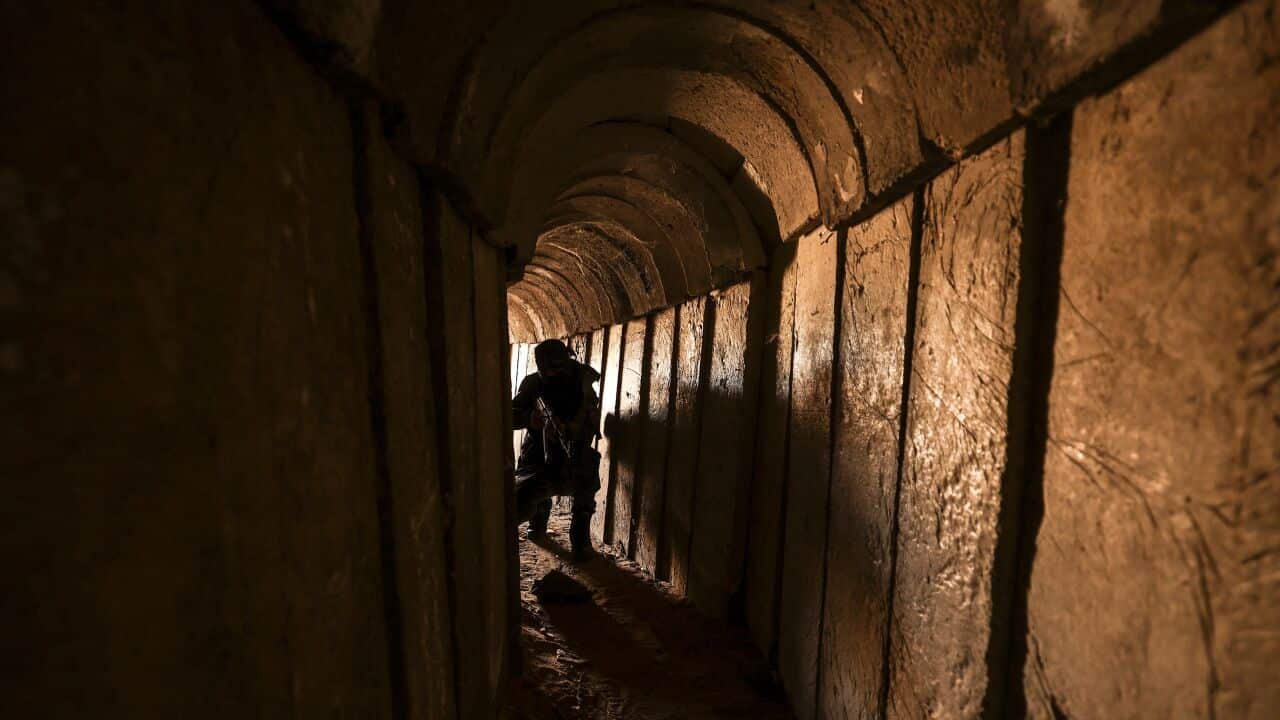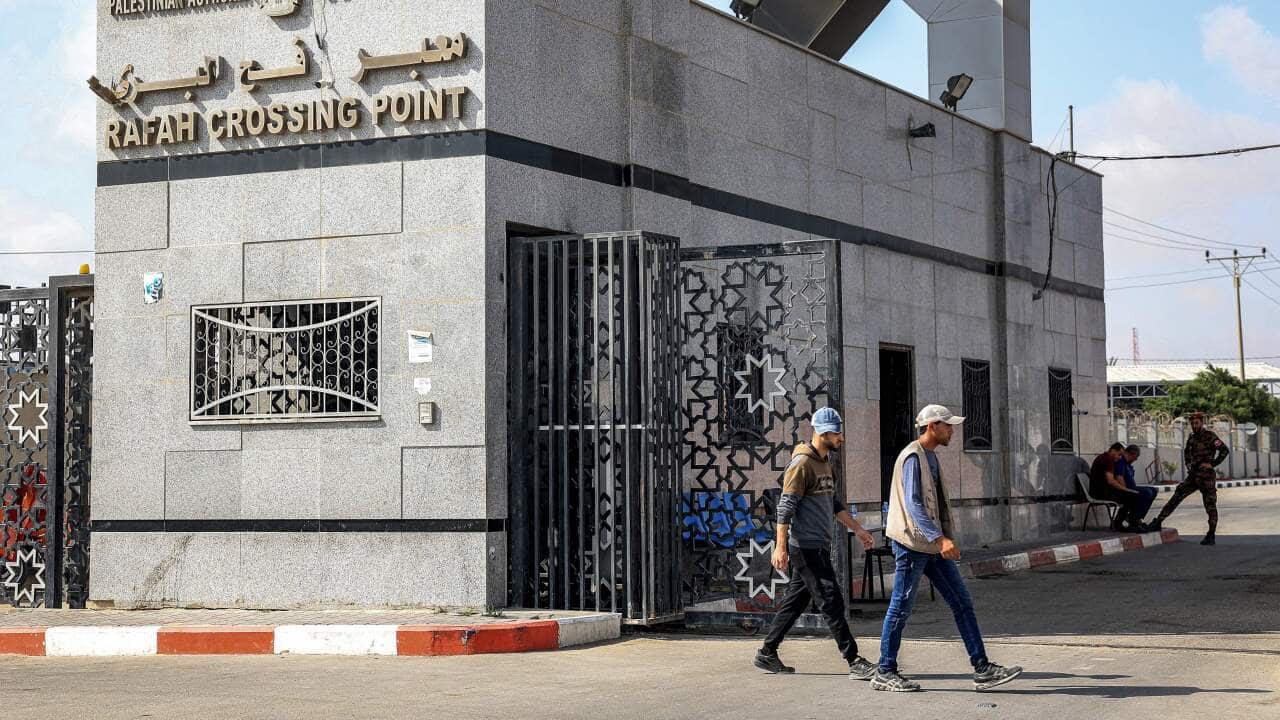Key Points
- The Israel Defence Forces said it would target tunnels beneath Gaza.
- Experts believe Hamas is using the tunnels to facilitate rocket launches.
- The tunnels are sometimes known as the Gaza Metro.
Underneath Gaza, a hidden network of tunnels stretching hundreds of kilometres has become a target of the Israel Defence Forces (IDF), as it prepares to launch a on the Gaza Strip in response to attacks by Hamas militants, who it plans to "wipe out".
The tunnels are believed to be as much as 30 metres below the surface, the BBC reports, and have entrances via houses, mosques, schools and other public buildings.
In a recent video, an IDF spokesperson described the tunnels as "" so that they can continue to fire rockets into Israel and said they were not "bunkers for civilians".

An Israeli soldier stands at the exit of a tunnel discovered near the Israel-Gaza border in 2013. Source: AAP / Tsafrir Abayov/AP
is one of the most densely populated areas on earth - in a space only 41 km long and 10 km wide.
But the tunnels underneath, sometimes known as the 'Gaza Metro', add another dimension to the , which believes Hamas is trying to draw soldiers into territory the militant group knows much better.
How big is the network of tunnels underneath Gaza?
It is not currently possible to independently verify the length of the tunnel network.
Hamas claimed in 2021 it stretched around 500 kilometres.
This was after the IDF said it had destroyed more than 100 km of tunnels in air strikes - Hamas countered this and said only 5 per cent were hit.
For context, Sydney's rail network covers 369 km while Melbourne's tram network is 250 km.
What is in the tunnels beneath Gaza?
Israeli officials expect the tunnels and ground throughout the area to be loaded with explosives.
"Nobody really knows what's underground," said Harel Chorev, a Palestinian historian at Tel Aviv University's Moshe Dayan Center for Middle East and African Studies.
Israel's intelligence community believes much of the money and material the world gave to the people of Gaza to rebuild after previous wars has been taken by Hamas and reinvested in the elaborate system of tunnels and bunkers.
"I don't see Israeli soldiers being able to storm these tunnels," Chorev said.
Instead, he believes they will try to locate them and find ways to "smoke them [Hamas fighters] out."
Despite Israel's constant air attacks on Gaza, Hamas has still been able to fire rockets at Israeli cities five days into the fighting.
In many cases those rockets are hidden underground on tracks so they can be moved within the tunnel network, frustrating Israel's air force.
Over the last decade, nervous Israelis have reported hearing digging underground.
The army has tried to come up with means to discover and destroy the tunnels on both sides of the border, with only limited success.
Israel's army knows the sophisticated underground system has electrical generators, intelligence rooms and supplies for Hamas' underground army.
The significant escalation since is the latest in a long-standing conflict between Hamas and Israel.
Israel is carrying out the most intense bombardment Gaza has ever seen in response to the killing of 1,300 people when Hamas fighters rampaged through Israeli towns on 7 October.
Authorities in Gaza said at least 2,670 people had so far been killed by Israel's retaliatory strikes and nearly 10,000 wounded. Another 1,000 people were missing and believed to be under rubble.

A Palestinian worker rests inside a smuggling tunnel in Rafah, on the border between Egypt and the southern Gaza Strip in 2013. Source: AAP / Hatem Moussa/AP
When were Gaza's underground tunnels built?
Tunnel construction started in Gaza around 2005.
The tunnels were weaponised around 2006, when members of Hamas used the system to sneak into Israel to kill two soldiers, wound two others and capture soldier Gilad Shalit.
He was held captive underground for more than five years and ultimately returned to Israel in a swap for 1,000 prisoners in Israeli jails.
Hamas is a Palestinian military and political group, which has gained power in the Gaza Strip since winning legislative elections there in 2006.
Following this Israel and Egypt restricted the movement of goods and people in and out for security reasons, but smuggling later became less important around 2010, when Israel began allowing more goods to be imported through its crossings.
Egypt later claimed to have ended the smuggling of commercial goods, fuel and weapons by flooding the tunnels.
Hamas' stated aim is to establish a Palestinian state, while refusing to recognise Israel's right to exist.
Hamas, in its entirety, is designated as a terrorist organisation by countries including Australia, Canada, the UK and the US.
New Zealand and Paraguay list only its military wing as a terrorist group. In 2018, the United Nations General Assembly voted against a resolution condemning Hamas in its entirety as a terrorist organisation.











